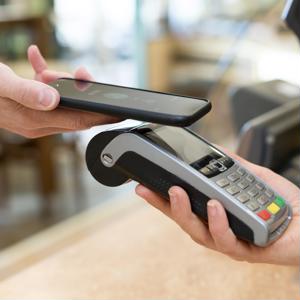How Samsung Pay can help retailers, even if they don't know it yet

As revolutionary as Apple Pay has been in its first year, giving iPhone owners, then Apple Watch wearers, the ability to pay with a wave of their device, it was not without its Achilles heel. For all its innovation, relying on retailers to install new point of sale (POS) hardware limited Apple Pay's adoption, rendering it unable to truly eliminate the wallets from our back pockets.
Launched at the end of September, Samsung Pay might finally hit the mark, allowing both users and retailers to better take advantage of a more universal mobile payment system. While Samsung Pay might look little different from Apple Pay, the technology running under the hood is wildly different, and it makes all the difference.
Apple Pay uses Near Field Communication (NFC) to pass encrypted payment data between its mobile device and POS terminals. While about 1 million retailers are currently equipped to receive NFC payments in the U.S., the technology has a long way to go before becoming universal. If customers can't banish their wallets altogether, they'll be unlikely to break the habit of pulling out their cards to make a purchase, even at locations that accept Apple Pay.
While Samsung, like Apple, believes that NFC technology will one day be ubiquitous, it recognizes that it is not there yet. In the meantime, it offers users a bridge to contactless payments technology that gives their phones the ability to communicate with almost any POS terminal where they can swipe a credit card.
Samsung Pay's Magnetic Secure Transmission (MST) technology generates a signal that mimics the magnetic field changes a stripe card produces when swiped. Instead of swiping their plastic, however, Samsung Pay users can activate the same card readers with their phones by simply holding them within 3 centimeters of the reader head. In order to keep the transaction secure, MST only exists during the transmission process. Because it utilizes existing POS technology, about 90 percent of retailers can accept MST payments without making any changes to their existing payment systems.
While NFC transactions will continue to become more common (With this in mind Samsung Pay is also NFC-compatible.) and chips will ultimately replace magnetic stripes for plastic payments, requiring retailers to update their POS hardware eventually, Samsung Pay can help you accept mobile payments in the meantime — without any extra effort on your part.
At Vantage, we're experienced in helping merchants determine which payment processing solutions are right for their business models. Contact us today to learn more about our solutions, ask a question or schedule a consultation.